#iifd chandigarh
Text
Home Interior Design Ideas to Brighten Up Your Space in 2024

As the new year unfolds, so do fresh opportunities to breathe new life into your living spaces. Whether you're looking to revamp your entire home or introduce subtle changes, the interior design trends of 2024 bring a burst of creativity and optimism. In this article, we explore innovative ideas to infuse light, vibrancy, and style into your home.
Biophilic Design:
Embrace the connection between nature and your living space with biophilic design. Incorporate indoor plants, natural materials, and ample natural light to create a refreshing and rejuvenating environment. Biophilic elements not only enhance aesthetics but also contribute to improved well-being.
Jewel Tones and Earthy Hues:
Inject warmth and sophistication into your home with rich jewel tones and earthy hues. Deep blues, emerald greens, and terracotta browns can be incorporated through accent walls, furnishings, and décor items. These colors add depth and a touch of luxury to your interiors.
Sustainable and Recycled Materials:
In 2024, sustainability takes center stage. Opt for furniture and décor crafted from recycled or sustainable materials. Not only does this contribute to a greener environment, but it also introduces unique and eco-friendly elements to your home.
Statement Lighting Fixtures:
Elevate your home's ambiance with statement lighting fixtures. Whether it's a chandelier, pendant lights, or unique floor lamps, bold and artistic lighting choices can become focal points, transforming the mood of a room and adding a touch of glamour.
Multi-Functional Furniture:
With the increasing emphasis on versatile living spaces, multi-functional furniture is a trend to watch. Invest in pieces that serve dual purposes, such as ottomans with hidden storage, sofa beds, or dining tables that can be extended for larger gatherings.
Textured Wallpapers:
Add depth and interest to your walls with textured wallpapers. From subtle textures like linen or grasscloth to more intricate patterns, textured wallpapers bring a tactile quality to your space. Consider using them as accent walls to make a bold statement.
Vintage and Retro Accents:
Give your home a nostalgic touch by incorporating vintage and retro accents. From mid-century modern furniture to retro-inspired accessories, these timeless pieces add character and a sense of history to your interiors.
Tech-Integrated Design:
Incorporate smart home technology seamlessly into your design. From smart lighting systems to automated window treatments, integrating technology enhances convenience and adds a futuristic touch to your living spaces.
Open Shelving in Kitchens:
Open shelving in kitchens continues to be a popular trend in 2024. It not only provides a practical storage solution but also allows you to display decorative items, adding a personalized and airy feel to your kitchen.
Maximalism with a Personal Touch:
Maximalism makes a comeback, but with a personal twist. Instead of overwhelming spaces with excess, curated collections of art, artifacts, and meaningful items create a maximalist aesthetic that reflects your unique personality and interests.
Ready to embark on your home transformation journey in 2024? IIFD - Indian Institute of Fashion and Design (@iifd) offers courses that seamlessly integrate the latest trends and timeless principles of interior design.
Transform Your Space with IIFD:
Explore the world of interior design at one of the top Interior Design colleges in India like, IIFD - Indian Institute Of Fashion & Design, in Chandigarh, India. IIFD courses are designed to equip aspiring designers with the skills, knowledge, and industry insights needed to excel in the dynamic field of interior design.
Visit IIFD official website or contact on at +91 9041766699 to learn more about how IIFD can be your partner in bringing these 2024 interior design trends to life in your home. Your journey to a brighter and more stylish living space starts with IIFD!
#Interior Design Ideas#Interior Design Idea#Interior Designing Ideas#Interior Designing#Interior Design course#IIFD#iifd chandigarh#education#careers#interior design#interior decor
2 notes
·
View notes
Text





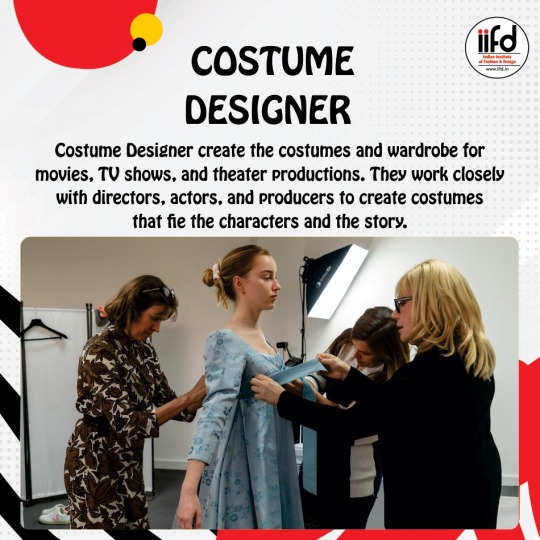
Dive into the World of Possibilities!
Discover 5 unconventional careers in fashion that redefine the industry. From trend forecasting to sustainable fashion advocacy, there's a path for every passion. Let's break the mold together!
Call +91-9041766699 to know more about admissions.
2 notes
·
View notes
Text


Yuvika Chaudhary At Chandigarh Times Fashion Week.
Budding Designers from Indian Institute Of Fashion & Design-IIFD has beautifully presented their creativity & thoughts with an eye-catching collection at Chandigarh Times Fashion Week 2022 (CTFW) with the show stopper Yuvika Chaudhary.
#Yuvika Chaudhary#celebrity#students#iifd#iifd Chandigarh#fashion show#fashion designing#fashion styling#dresses
4 notes
·
View notes
Text
The Rise of Fashion Design Studies

Fashion design plays taken a fundamental part in the market somewhat recently since it characterizes the inclinations of individuals and contributes a significant component in the existence of individuals. Indeed, even in the most pessimistic scenario study, fashion design is an extraordinary open door in light of the fact that in any region of the planet (with the exception of those that are at war or in emergency) there is a business opportunity for fashion.
WHY STUDY FASHION DESIGN?
Clearly this question has come to your head over and over; and is that we should know that in any event, when we accept that a calling is the right one for us, we actually feel somewhat uncertain.
Picking a vocation is the principal major choice that you make in your fashion designing establishments in Mumbai training, and since the taking is typical to feel unreliable or ill-equipped to enter the college, a few things that we ought to be aware prior to going into the design profession of Fashion are as per the following:
Concentrating on fashion design is considerably more than simply the example and the dress; to make pieces of clothing recount a story and address the issues of a client. Obviously, don't save yourself from going through your evenings disparaging, sewing and stripping until you make the ideal pieces of clothing that you designed, so on the off chance that you're not such a lot of the design searches for a school that has a lifelong zeroed in on advertising, promoting or distributing Fashion.
Designing garments isn't just drawing an outfit and getting into wonderful garments, designing garments is to figure out anthropological choices, comprehend society and the garments they convey step by step.
You are NEVER excessively educated: by and large, Indian culture relates Fashion Design with a shallow and hackneyed review, however to bring something else to an industry that changes so quick, it is important to be very much educated and not simply fashion houses or Designers.
A fashion designer can fill in as an imaginative chief, entertainer, purchaser, item supervisor, proofreader, editorial manager, designer, business chief, behind the stage director, among numerous different positions. In this way, don't stress over starving yourself or wind up fixing pants bowls.
We know that to prevail in this field, you want ability, unquestionably, But likewise the right preparation and the right confirmation. The fashion design colleges, fashion design, and fashion have surely known, and confronted with request developing; many have arisen lately. The schools of design, fashion design, and fashion have surely known, and confronting the rising interest.
#courses in designing#Fashion design courses#Fashion design colleges#fashion design course#Fashion trends#career opportunities#iifd#iifd chandigarh#Educational Blog
3 notes
·
View notes
Text
Education and Training tips for Fashion Designers

Embarking on a career in fashion design is an exhilarating journey filled with creativity, innovation, and endless possibilities. Whether you're a budding designer with a passion for style or a seasoned professional looking to refine your skills, investing in education and training is essential for success in the dynamic and competitive world of fashion. In this blog, we'll explore valuable tips and insights to help aspiring fashion designers navigate their educational journey and master the craft, with guidance from IIFD - Indian Institute of Fashion & Design to support your growth and development.
Pursue Formal Education:
While innate talent and creativity are essential qualities for fashion designers, formal education provides the foundation and technical skills needed to excel in the industry. Consider enrolling in a reputable fashion design program at a recognized institution or university, where you can learn essential skills such as patternmaking, draping, sewing, and textile design. Look for programs that offer a comprehensive curriculum, experienced faculty, and opportunities for hands-on learning and real-world experience.
Embrace Lifelong Learning:
Fashion design is a constantly evolving field, with new trends, technologies, and techniques emerging all the time. Embrace a mindset of lifelong learning and seek out opportunities to expand your knowledge and skills through workshops, courses, seminars, and industry events. Stay abreast of current trends, innovations, and best practices in fashion design by reading industry publications, following influential designers on social media, and attending fashion shows and exhibitions.
Hone Your Technical Skills:
Technical proficiency is essential for success in fashion design, whether it's mastering patternmaking software, perfecting sewing techniques, or experimenting with textile manipulation. Dedicate time to honing your technical skills through practice, experimentation, and hands-on projects. Take advantage of workshops, tutorials, and online resources to learn new techniques and explore different approaches to design. The more proficient you become in technical skills, the more freedom you'll have to express your creativity and bring your designs to life.
Develop Your Design Aesthetic:
Developing a distinct design aesthetic is essential for standing out in a crowded industry and building a cohesive and recognizable brand identity. Take the time to explore different styles, themes, and inspirations that resonate with your personal interests and creative vision. Experiment with different materials, textures, colors, and silhouettes to develop a signature style that sets you apart from other designers. Your design aesthetic should reflect your unique perspective, cultural influences, and artistic sensibility, allowing you to create collections that are authentic and compelling.
Gain Practical Experience:
While formal education provides a solid foundation in fashion design theory and technique, gaining practical experience is equally important for honing your craft and preparing for a career in the industry. Seek out internships, apprenticeships, or entry-level positions with fashion brands, design houses, or retailers to gain hands-on experience in a professional setting. Not only will practical experience enhance your skills and industry knowledge, but it will also provide valuable insights into the day-to-day realities of working in fashion design.
Build Your Portfolio:
Your portfolio is your most powerful tool for showcasing your skills, creativity, and design aesthetic to potential employers, clients, or collaborators. Invest time and effort into building a strong and diverse portfolio that highlights your best work, including sketches, technical drawings, mood boards, and completed projects. Tailor your portfolio to showcase your strengths and areas of expertise, whether it's womenswear, menswear, childrenswear, or accessories. Regularly update your portfolio with new projects and achievements to demonstrate your growth and development as a designer.
Conclusion:
Education and training are essential pillars of success for aspiring fashion designers, providing the knowledge, skills, and confidence needed to thrive in a competitive industry. By pursuing formal education, embracing lifelong learning, honing technical skills, developing a distinct design aesthetic, gaining practical experience, and building a strong portfolio, aspiring designers can position themselves for success and unlock their full potential in the dynamic world of fashion. At the Best Fashion Design College in India, IIFD - Indian Institute of Fashion & Design, we're committed to empowering aspiring designers with the education, training, and support they need to succeed in the industry. Contact IIFD today to learn more about our fashion design programs and take the first step toward realizing your dream career in fashion.
Ready to take your passion for fashion design to the next level? Join us at IIFD - Indian Institute of Fashion & Design and gain the education, training, and support you need to thrive in the dynamic world of fashion.
0 notes
Text
Navigating the Job Market in Fashion Design

Entering the job market in fashion design can be both exhilarating and daunting, as aspiring designers navigate a landscape of opportunities, challenges, and competition. Whether you're a recent graduate seeking your first job or a seasoned designer looking to advance your career, understanding how to navigate the job market effectively is essential for success.
In this blog, we'll explore key strategies and insights to help aspiring fashion designers navigate the job market with confidence and purpose, with guidance from the Indian Institute of Fashion & Design to support your journey.
Define Your Career Path:
Before diving into the job market, take the time to clarify your career goals and aspirations. Identify your areas of interest, whether it's womenswear, menswear, childrenswear, accessories, or niche specialties like sustainable fashion or costume design. Consider the type of company or organization you'd like to work for - whether it's a high-end fashion house, a mass-market retailer, a design studio, or a startup. By defining your career path upfront, you can focus your job search efforts and tailor your application materials to align with your goals.
Build Your Portfolio:
Your portfolio is your most powerful tool for showcasing your skills, creativity, and design aesthetic to potential employers. Take the time to curate a strong portfolio that highlights your best work, including sketches, technical drawings, mood boards, and completed projects. Tailor your portfolio to the specific requirements of each job application, emphasizing relevant experience and skills that demonstrate your suitability for the role. Regularly update your portfolio with new projects and achievements to reflect your growth and development as a designer.
Network Strategically:
Networking is a critical component of navigating the job market in fashion design, providing opportunities to connect with industry professionals, recruiters, and fellow designers. Attend industry events, fashion shows, and networking mixers to expand your professional network and learn about job opportunities. Join professional organizations, online forums, and social media groups to stay informed about industry trends, job openings, and networking opportunities. Cultivate genuine relationships with contacts in the industry, and be proactive in reaching out for informational interviews and mentorship opportunities.
Research Companies and Opportunities:
Before applying for jobs, research companies and organizations that align with your career goals and values. Familiarize yourself with their brand identity, design aesthetic, target audience, and corporate culture to ensure a good fit. Monitor job boards, company websites, and industry publications for job openings and internship opportunities that match your skills and interests. Tailor your application materials—including your resume, cover letter, and portfolio—to demonstrate your understanding of the company and your suitability for the role.
Prepare for Interviews:
Preparing for job interviews is essential for making a positive impression on potential employers and showcasing your qualifications and suitability for the role. Research commonly asked interview questions in the fashion industry and prepare thoughtful responses that highlight your skills, experience, and passion for design. Practice presenting your portfolio and discussing your design process, inspirations, and previous projects with confidence and clarity. Dress professionally and bring copies of your resume and portfolio to the interview to leave a lasting impression.
Stay Persistent and Resilient:
Navigating the job market in fashion design can be a competitive and challenging process, requiring persistence, resilience, and determination. Don't be discouraged by rejection or setbacks—instead, use them as opportunities for growth and learning. Stay proactive in your job search efforts, continuously expanding your network, refining your portfolio, and seeking out new opportunities. Remember that finding the right job may take time, but with patience and perseverance, you'll eventually find a role that aligns with your goals and aspirations.
Conclusion:
Navigating the job market in fashion design requires careful planning, strategic networking, and persistence in the face of challenges. By defining your career path, building a strong portfolio, networking strategically, researching companies and opportunities, preparing for interviews, and staying persistent and resilient, you can position yourself for success dynamically and competitively industry. At IIFD - Indian Institute of Fashion & Design, we're committed to supporting aspiring fashion designers as they navigate their career journeys. Contact us today to learn more about our fashion design programs and how we can help you achieve your career goals in the exciting world of fashion.
Ready to launch your career in fashion design with confidence and purpose? Join the Best Fashion Design College in India like IIFD - Indian Institute of Fashion & Design and gain the skills, knowledge, and industry connections you need to succeed in the competitive job market. Contact IIFD to learn more about our fashion design programs and take the first step toward a rewarding career in the exhilarating world of fashion.
#Jobs in Fashion#Fashion Design#Fashion Industry#Fashion Designing#careers#iifd#education#iifd chandigarh#fashion design education#fashion design institute#fashion design course
0 notes
Text
Choosing the Right Interior Design College in India

Embarking on a journey in interior design is an exciting endeavor, but selecting the right college can significantly impact your educational experience and future career prospects. With numerous options available across India, making the right choice requires careful consideration of various factors. In this article, we'll explore essential considerations for choosing the right interior design college and why the Indian Institute of Fashion & Design (IIFD) stands out as a premier institution in the field.
Understanding Your Goals:
Before diving into the search for an interior design college, it's crucial to clarify your goals and aspirations. Consider factors such as:
Career Objectives: Are you interested in residential design, commercial spaces, hospitality, retail, or specialized areas like sustainable design or set design?
Learning Style: Do you prefer hands-on learning experiences, theoretical coursework, or a combination of both?
Location: Are you looking for colleges in specific cities or regions that offer unique opportunities or align with your personal preferences?
Accreditation: Does the college hold accreditation from relevant educational bodies, ensuring the quality and recognition of its programs?
Researching Interior Design Colleges:
Once you've identified your goals, conduct thorough research on interior design colleges in India. Consider the following factors during your evaluation process:
Academic Reputation: Look for colleges with a strong reputation for academic excellence, experienced faculty members, and industry connections.
Curriculum and Specializations: Evaluate the curriculum offered by each college, including core courses, electives, and opportunities for specialization in areas of interest.
Facilities and Resources: Assess the facilities and resources available, such as design studios, computer labs, libraries, and material workshops, to support your learning and creative endeavors.
Industry Engagement: Research colleges that actively engage with the design industry through guest lectures, workshops, internships, and industry collaborations, providing valuable exposure and networking opportunities.
Alumni Success: Explore the achievements and success stories of alumni from each college, as they reflect the effectiveness of the institution in preparing students for successful careers in interior design.
Why Choose IIFD:
The Indian Institute of Fashion & Design (IIFD) emerges as a leading choice for aspiring interior designers, offering a comprehensive educational experience tailored to meet industry demands and student aspirations. Here's why IIFD stands out:
Industry-Relevant Curriculum: IIFD's interior design programs feature a carefully crafted curriculum that blends theoretical knowledge with practical skills, preparing students for diverse career paths within the field.
Experienced Faculty: Our faculty members are seasoned professionals and experts in their respective domains, providing mentorship, guidance, and real-world insights to students throughout their academic journey.
State-of-the-Art Facilities: IIFD boasts modern facilities equipped with the latest technology and resources, including design studios, computer labs, material libraries, and exhibition spaces, fostering a conducive learning environment for creativity and innovation.
Industry Partnerships: We have established strong partnerships with leading design firms, industry organizations, and professionals, facilitating internships, industry projects, and networking opportunities for our students.
Alumni Success Stories: Our alumni have made significant contributions to the design industry, showcasing the effectiveness of IIFD's education in shaping successful careers and fostering creative excellence.
Conclusion:
Choosing the right interior design college in India is a critical step towards achieving your career aspirations and unleashing your creative potential. By carefully considering factors such as academic reputation, curriculum, facilities, industry engagement, and alumni success, you can make an informed decision that aligns with your goals and aspirations. With its commitment to excellence, industry relevance, and student success, IIFD - Indian Institute of Fashion & Design (@iifd) emerges as one of the best Interior Design Colleges in India for aspiring interior designers seeking a transformative educational experience and a pathway to success in the dynamic world of interior design.
Ready to embark on your journey in interior design with IIFD? Contact IIFD today to learn more about our interior design programs, admissions process, and how IIFD can help you achieve your goals and unleash your creative potential in the exciting field of interior design.
#Interior Design College in India#Interior Design Colleges in India#Interior Design#Interior Design College#Design College#Colleges#Education#India#Chandigarh#IIFD#iifd chandigarh#careers#interior designing
0 notes
Text
A Guide to Interior Design from Concept to Creation
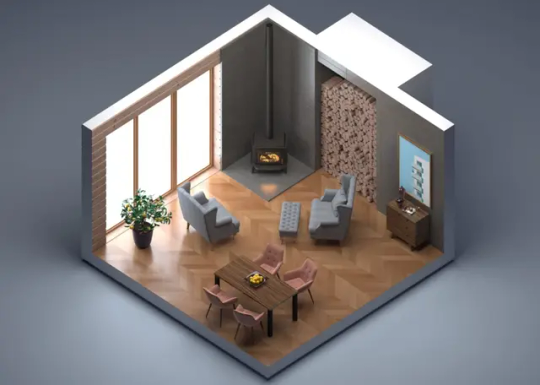
Interior design is a fascinating journey that begins with a simple sketch and evolves into a meticulously crafted space that reflects the vision, personality, and lifestyle of its occupants. From concept development to space planning and final execution, every step of the design process is infused with creativity, innovation, and attention to detail. Let's embark on a journey from sketch to space and explore the concepts and principles that guide the creation of captivating interior environments.
Concept Development
The journey of interior design begins with a spark of inspiration – a concept that sets the tone and direction for the entire project. Whether it's a theme inspired by nature, a historical period, or a client's personal story, the concept serves as a guiding vision that informs design decisions and unifies the space. Designers draw upon their creativity, research, and imagination to develop concepts that are both compelling and relevant to the project brief, laying the foundation for a cohesive and harmonious design.
Space Planning
Once the concept is established, designers move on to the critical task of space planning – the art of arranging furniture, fixtures, and functional elements within the space to optimize flow, functionality, and efficiency. Through careful analysis of spatial requirements, traffic patterns, and ergonomic considerations, designers create layouts that maximize the usability and comfort of the space while maintaining aesthetic balance and visual interest. Space planning is a meticulous process that requires attention to detail and a deep understanding of human behavior and interaction with the built environment.
Material Selection
Materials play a pivotal role in interior design, influencing the look, feel, and ambiance of a space. From flooring and wall finishes to furniture and accessories, every material choice contributes to the overall aesthetic and sensory experience of the space. Designers consider factors such as durability, sustainability, and maintenance requirements when selecting materials, ensuring that they not only enhance the visual appeal of the space but also meet the functional and practical needs of the occupants.
Lighting Design
Lighting is an essential element of interior design that can dramatically affect the mood, atmosphere, and functionality of a space. Designers employ a variety of lighting techniques, including ambient, task, and accent lighting, to create layers of illumination that enhance the visual appeal and functionality of the space. By carefully considering the placement, intensity, and color temperature of light fixtures, designers can manipulate the perception of space, highlight architectural features, and evoke different emotions within the environment.
Final Execution
The culmination of the interior design journey is the realization of the concept into a tangible, livable space. Through collaboration with architects, contractors, craftsmen, and artisans, designers oversee the implementation of their vision, ensuring that every detail is executed to perfection. From sourcing furnishings and accessories to coordinating construction and installation, designers oversee every aspect of the project, bringing the concept to life and transforming sketches into spaces that inspire, delight, and enrich the lives of their occupants.
Your Journey Begins at IIFD
At IIFD - Indian Institute of Fashion and Design, we believe in the transformative power of interior design and the endless possibilities it offers for creative expression and innovation. IIFD interior design courses are designed to equip students with the skills, knowledge, and confidence needed to embark on a journey of exploration and discovery in the world of design. With a curriculum that emphasizes conceptual thinking, hands-on experience, and industry exposure, IIFD prepares students to transform sketches into spaces that captivate the imagination and leave a lasting impression.
Are you ready to embark on a journey from sketch to space and unleash your creativity in the world of interior design? Explore interior design programs at Interior Designing Colleges in India like IIFD - Indian Institute of Fashion & Design (@iifd) and take the first step towards a fulfilling and rewarding career in design.
Visit or Contact IIFD today to learn more about the courses and start your journey towards becoming a skilled and visionary interior designer.
#Interior Design#Guide#iifd#education#careers#career#tips#how to#Interior Designer#home & lifestyle#home decor#iifd chandigarh#interior designing#interior design college
0 notes
Text
#iifd#iifd chandigarh#fashion designing courses#fashion designing careers#fashion designing#fashion design courses#fashion design college
0 notes
Text
What Skills Do You Learn in Fashion Design?
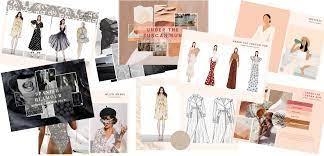
Fashion design is a creative and rewarding field that requires a wide range of skills. From sketching designs to draping fabrics and creating patterns, fashion designers need to be able to work with different materials, techniques, and tools.
In this blog post, we’ll discuss some of the essential skills you can learn in fashion design.
Sketching and Illustration
Sketching and illustration are essential skills for fashion designers. These skills allow designers to communicate their ideas visually and create a blueprint for their designs. Sketching and illustration skills also help designers explore different design ideas and make changes to their designs before moving on to the production process.
Sewing and Pattern Making
Sewing and pattern making are critical skills for fashion designers. Sewing skills allow designers to create prototypes and samples of their designs, while pattern making skills help them create the blueprint for the final product. These skills also allow designers to understand the construction of garments and identify areas for improvement or innovation.
Fabric Selection and Textile Knowledge
Fashion designers must have a deep understanding of fabrics and textiles. This includes understanding the properties of different materials, such as their weight, drape, and durability, and knowing how to select the right fabric for a particular design. A good knowledge of textiles also helps designers to identify new and innovative materials that can enhance their designs.
Trend Forecasting and Analysis
Trend forecasting and analysis are essential skills for fashion designers. These skills allow designers to identify current and future fashion trends and incorporate them into their designs. A good understanding of fashion trends also helps designers stay ahead of the curve and create designs that resonate with their target audience.
Computer-Aided Design (CAD)
Computer-Aided Design (CAD) is an essential tool for modern fashion designers. CAD software allows designers to create digital designs, test different color and texture combinations, and make changes to their designs quickly and easily. This technology has revolutionized the fashion design process and is now a critical skill for any aspiring fashion designer.
Communication and Collaboration
Communication and collaboration skills are essential for fashion designers. These skills allow designers to work effectively with manufacturers, suppliers, and other stakeholders in the design process. Clear communication and collaboration also help designers ensure that their designs are produced to the highest standards and meet the needs of their target audience.
Final Thoughts
Fashion design is a multifaceted field that requires a wide range of skills. From sketching and sewing to trend forecasting and computer-aided design, fashion designers must be versatile and adaptable. By learning these essential skills, fashion designers can create innovative and stylish designs that resonate with their target audience and stand the test of time.
Join The Best Fashion Designing College in India. IIFD is The most popular and Leading Fashion Design College in India which Offers professional training in Fashion Design Courses.
#fashion design#fashion design skills#fashion design education#fashion design course#fashion design college#fashion design institute#iifd Chandigarh
0 notes
Text
Day 2 of Chandigarh Times Fashion Week is a lot of stylish drama - Times of India
Day 2 of Chandigarh Times Fashion Week is a lot of stylish drama – Times of India
On day 2 of Nirwana Square One Presents IIFD Chandigarh Times Fashion Week Powered by Senco & Aliyana by Meena Bazaar, the ramp came alive with lot of glamour, sass and pizzazz as celebrities from the world of fashion and acting came together to celebrate maiden edition of CTFW.
The evening began with designers Clovia and Sidharath K Kakkar. Clovia was a sensuous show of sundowner bralettes,…

View On WordPress
0 notes
Text
What are your Goals as a Fashion Designer?

As a fashion designer, setting clear and ambitious goals is essential for charting your path to success and fulfillment in the dynamic and competitive world of fashion. Whether you're just starting your journey or are a seasoned professional, understanding your aspirations, passions, and objectives is crucial for guiding your career trajectory and achieving your dreams. In this blog, we'll delve into the importance of goal-setting for fashion designers and explore some common goals that can help you navigate your path with purpose and intention.
Establishing Your Personal Brand:
One of the key goals for many fashion designers is to establish a strong and recognizable personal brand that reflects their unique style, vision, and values. Your personal brand is not only a reflection of your aesthetic sensibility but also a representation of your identity and ethos as a designer. Whether you aspire to be known for your sustainable designs, avant-garde creations, or innovative use of materials, cultivating a distinct brand identity can set you apart in a crowded industry and attract a loyal following of supporters and clients.
Building a Successful Fashion Label:
For many fashion designers, the ultimate goal is to build a successful and profitable fashion label that resonates with consumers and makes a lasting impact on the industry. Whether you dream of launching your own eponymous brand, collaborating with established retailers, or creating a global fashion empire, building a successful fashion label requires a combination of creativity, business acumen, and strategic planning. Setting concrete goals for sales targets, distribution channels, and brand partnerships can help you chart a clear path toward realizing your entrepreneurial aspirations.
Making a Positive Impact:
Beyond commercial success, many fashion designers aspire to make a positive impact on society and the planet through their work. Whether it's advocating for sustainable practices, championing diversity and inclusivity, or using fashion as a platform for social change, making a positive impact can be a powerful motivator for designers. Setting goals for implementing eco-friendly production methods, promoting fair labor practices, or supporting charitable causes can align your creative endeavors with your values and contribute to a more ethical and responsible fashion industry.
Pushing Creative Boundaries:
As a fashion designer, pushing creative boundaries and continually challenging yourself to innovate and evolve is essential for staying relevant and inspiring. Whether you aspire to experiment with new techniques, explore unconventional materials, or collaborate with artists from other disciplines, setting goals for creative exploration can fuel your passion and drive your artistic growth. Embracing failure as a natural part of the creative process and remaining open to experimentation and risk-taking can lead to breakthroughs and discoveries that elevate your work to new heights.
Nurturing Professional Growth:
Finally, as a fashion designer, nurturing your professional growth and development is essential for achieving long-term success and fulfillment in your career. Whether it's furthering your education, attending industry events and workshops, or seeking mentorship from experienced professionals, setting goals for continuous learning and improvement can help you stay ahead of the curve and adapt to the ever-changing demands of the industry. Embracing opportunities for networking, collaboration, and skill-building can expand your horizons and open doors to new possibilities in your career.
Conclusion:
As you embark on your journey as a fashion designer, take the time to define your goals, aspirations, and dreams. Whether it's establishing your personal brand, building a successful fashion label, making a positive impact, pushing creative boundaries, or nurturing your professional growth, setting clear and ambitious goals can provide direction, purpose, and motivation on your path to success. At One of the Best Fashion Design Colleges in India, IIFD - Indian Institute of Fashion & Design, we're committed to empowering aspiring designers to achieve their goals and realize their dreams in the dynamic world of fashion. Contact IIFD to learn more about our fashion design programs and take the first step toward turning your goals into reality.
Ready to pursue your goals as a fashion designer with purpose and passion? Join us at the Indian Institute of Fashion & Design (IIFD) and embark on a transformative journey in the world of fashion. Contact us today to learn more about our fashion design programs and take the next step toward realizing your dreams in the dynamic and exhilarating world of fashion.
#Fashion Designer#Goals#Fashion Goals#IIFD#IIFD Chandigarh#Career#Fashion Design Education#education#careers#fashion design courses#fashion design#fashion designing#fashion designing courses#interior design#designer
0 notes
Text
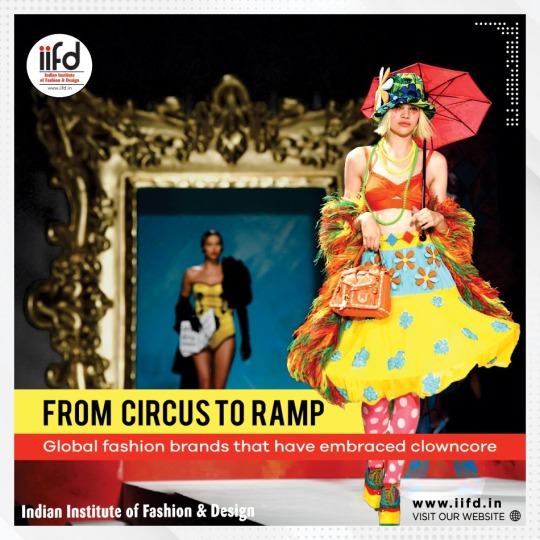



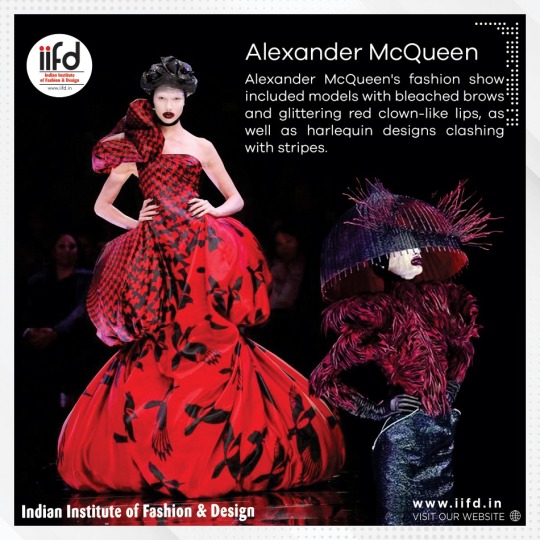
Check out these awesome brands that turned clown fashion into a big hit! From colorful outfits to fancy runways, Dior, Moschino, Alexander McQueen, and Vivienne Westwood are making clowncore cool!
2 notes
·
View notes
Text


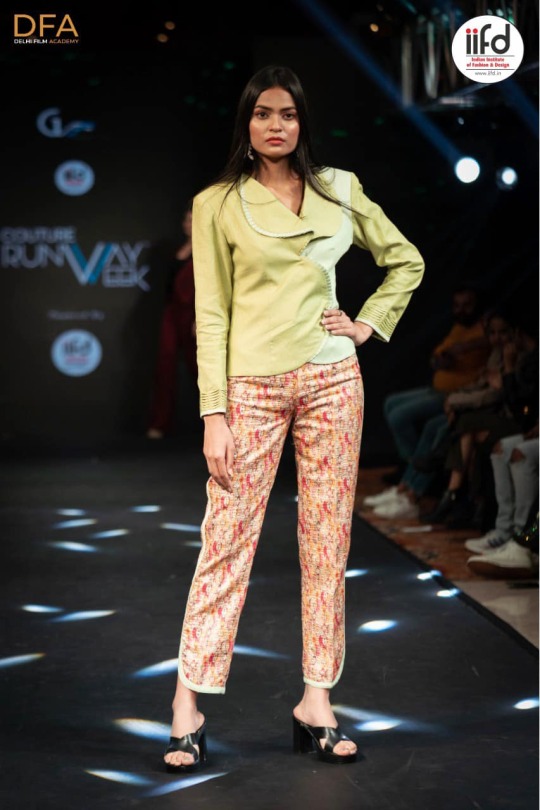



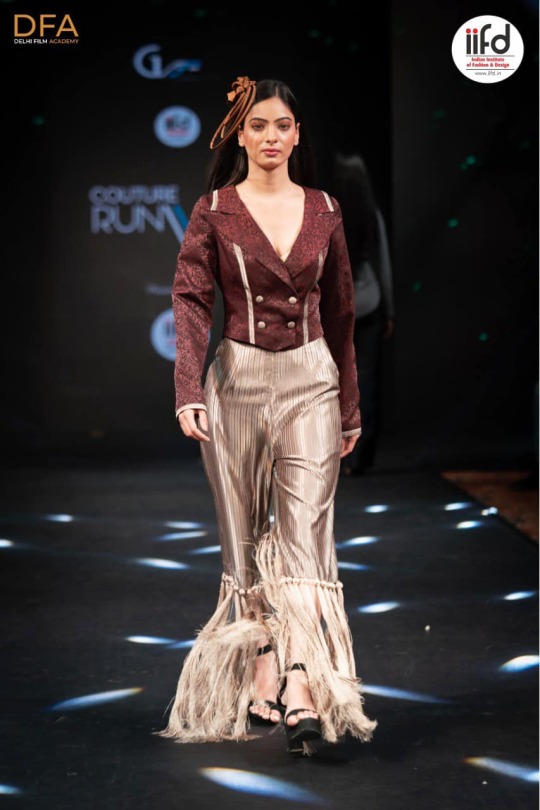
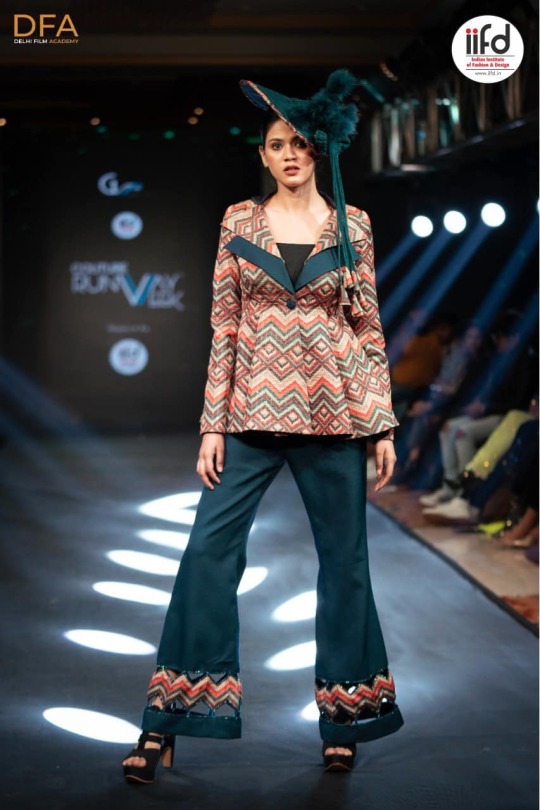

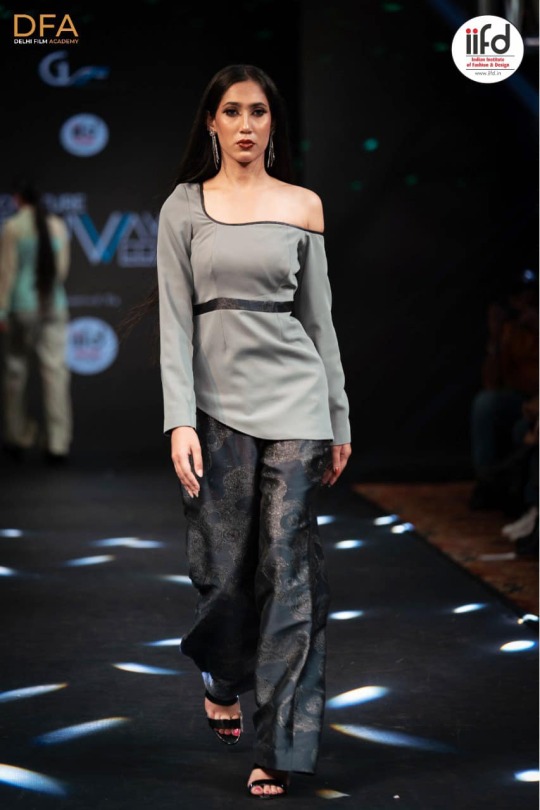
Budding Fashion Designers at Couture Runway Week
Budding Fashion Designers - IIFD'ians are visionary individuals who combine their creative skills with business acumen to design and create garments, footwear and accessories.
IIFD students Created a perfect Impression on the witness of Couture Runway Week Season 5 Powered By Indian Institute Of Fashion & Design - IIFD.
#couture runway week#fashion runways#fashion show#show stopper#celebrity#iifd#iifd chandigarh#career#Fashion designing#fashion styling#fashion model#models#Style#beauty#hairstyle
2 notes
·
View notes
Text
The Career Paths of Fashion Designers
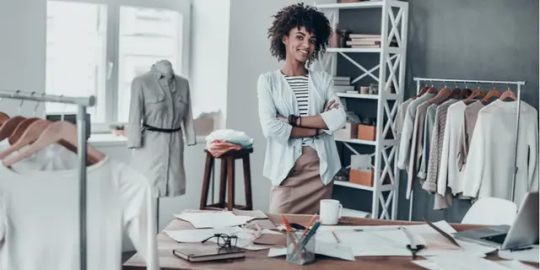
Fashion design is a multifaceted industry that offers a wide array of career paths for creative individuals with a passion for style, innovation, and self-expression. From designing haute couture collections to overseeing global marketing campaigns, the career opportunities in fashion design are as diverse as they are dynamic.
In this article, we'll take a closer look at the various career paths available to fashion designers, highlighting the range of roles, responsibilities, and opportunities within the industry, with insights from IIFD - Indian Institute of Fashion & Design to guide aspiring designers along their chosen paths.
Fashion Designer:
The most traditional career path for fashion designers is to work as in-house designers or freelance designers for fashion brands, design houses, or retailers. Fashion designers are responsible for conceptualizing, sketching, and developing clothing, accessories, or footwear collections that reflect the brand's aesthetic, target audience, and market trends. They work closely with patternmakers, sample makers, and merchandisers to bring their designs to life and oversee the entire design process from concept to production.
Creative Director:
Creative directors play a pivotal role in shaping the artistic vision and brand identity of fashion labels, design houses, or fashion publications. They oversee the creative direction of collections, advertising campaigns, editorial shoots, and brand collaborations, ensuring consistency, innovation, and relevance across all brand touchpoints. Creative directors often collaborate with fashion designers, photographers, stylists, and marketing teams to create compelling visual narratives that resonate with consumers and drive brand loyalty.
Fashion Illustrator:
Fashion illustrators are skilled artists who specialize in creating hand-drawn or digital illustrations of fashion designs, concepts, and trends. They work closely with fashion designers to visualize their ideas and bring them to life through detailed drawings or sketches. Fashion illustrators may also collaborate with fashion publications, advertising agencies, or retailers to create editorial illustrations, advertising campaigns, or promotional materials that showcase the latest trends and collections.
Patternmaker:
Patternmakers are the unsung heroes of the fashion industry, responsible for translating fashion designers' sketches and concepts into precise patterns that serve as the blueprint for garment construction. Using specialized software or traditional drafting techniques, patternmakers create flat pattern pieces that are used to cut fabric and assemble garments. They work closely with fashion designers, sample makers, and manufacturers to ensure that garments fit correctly and meet quality standards.
Fashion Buyer:
Fashion buyers play a crucial role in selecting and purchasing merchandise for retail stores, e-commerce platforms, or fashion boutiques. They analyze market trends, consumer preferences, and sales data to curate assortments of clothing, accessories, or footwear that align with the retailer's brand and target audience. Fashion buyers negotiate pricing, terms, and delivery schedules with vendors and suppliers to optimize profitability and maximize sales potential.
Fashion Merchandiser:
Fashion merchandisers bridge the gap between design and business, ensuring that fashion collections are strategically planned, promoted, and distributed to maximize sales and profitability. They analyze market trends, consumer behavior, and sales data to develop merchandising strategies, pricing strategies, and promotional campaigns that drive traffic and sales. Fashion merchandisers work closely with fashion designers, buyers, marketers, and retail managers to optimize product assortments, visual presentations, and sales performance.
Conclusion:
The career paths of fashion designers are as diverse and dynamic as the industry itself, offering a wealth of opportunities for creative individuals to make their mark in the world of fashion. Whether you aspire to become a fashion designer, creative director, fashion illustrator, patternmaker, fashion buyer, or fashion merchandiser, there are countless avenues to explore and opportunities to pursue. At the Best Fashion Design College in India, IIFD - Indian Institute of Fashion & Design, we're committed to empowering aspiring designers to pursue their chosen career paths and achieve their professional goals in the dynamic world of fashion. Contact IIFD today to learn more about our fashion design programs and how we can help you embark on your journey to a successful career in fashion.
Ready to embark on your journey to a successful career in fashion design? Join us at the Indian Institute of Fashion & Design (IIFD) and gain the skills, knowledge, and industry connections you need to thrive in the dynamic world of fashion.
#iifd#education#iifd chandigarh#careers#fashion design course#fashion design institute#fashion design college#fashion design courses#fashion designing courses#fashion design colleges#Fashion Designers#Fashion Designer
0 notes
Text
How Interior Design Consultancies Work
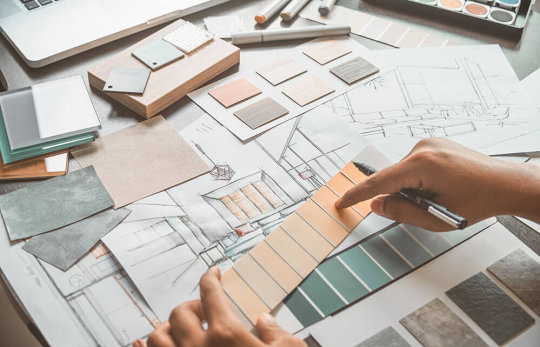
Behind every stunning interior space lies a team of talented designers, architects, and project managers working tirelessly to bring their clients' visions to life. Interior design consultancies play a pivotal role in this process, serving as creative hubs where ideas are born, concepts are developed, and dreams are realized. In this blog, we'll take a behind-the-scenes look at how interior design consultancies work, from the initial client consultation to the final installation, and how you can embark on a career in this dynamic field with IIFD - Indian Institute of Fashion and Design (@iifd) .
Understanding the Consultancy Model
Interior design consultancies operate on a collaborative model, bringing together a diverse team of design professionals with expertise in various aspects of interior design, architecture, and project management. These multidisciplinary teams work closely with clients to understand their needs, preferences, and objectives, ensuring that every project is tailored to meet the unique requirements of the client and the space. From residential renovations to commercial fit-outs, interior design consultancies offer a wide range of services designed to transform spaces and enhance the lives of their occupants.
The Client Consultation Process
The design process typically begins with an initial client consultation, where designers meet with the client to discuss their project goals, budget, and timeline. During this meeting, designers listen carefully to the client's needs and preferences, ask probing questions to uncover their design style and aesthetic preferences, and gather information about the project site and any existing conditions that may impact the design. By establishing clear communication and rapport with the client from the outset, designers can ensure that their design vision aligns with the client's expectations and objectives.
Concept Development and Design
Once the client's needs and objectives have been established, designers begin the process of concept development and design. This typically involves brainstorming ideas, creating mood boards, and developing initial design concepts that capture the essence of the client's vision. Designers may present these concepts to the client for feedback and iteration, refining the design until it meets the client's approval. Throughout this process, designers draw on their expertise in space planning, color theory, materials selection, and lighting design to create spaces that are both functional and beautiful, tailored to the unique needs and preferences of the client.
Project Management and Execution
Once the design has been finalized, interior design consultancies oversee the project management and execution phase, ensuring that the design vision is brought to life with precision and attention to detail. This may involve coordinating with architects, contractors, and vendors to procure materials, obtain permits, and manage construction schedules. Designers may also oversee the installation of furniture, fixtures, and accessories, ensuring that every aspect of the design is executed according to plan and meets the highest standards of quality and craftsmanship.
Joining the Design Team with IIFD
At IIFD - Indian Institute of Fashion and Design, we understand the intricacies of interior design consultancy work and the skills and expertise required to excel in this dynamic field. Our interior design programs are designed to provide students with a comprehensive understanding of the design process, from concept development to project management and execution. With hands-on projects, studio critiques, and real-world experiences, IIFD prepares students to become skilled and knowledgeable designers who can thrive in the fast-paced world of interior design consultancy.
Conclusion:
Interior design consultancies are at the forefront of creativity and innovation in the design industry, shaping the way we live, work, and interact with our built environments. By understanding how these consultancies work and the role they play in bringing design visions to life, you can embark on a rewarding and fulfilling career in this dynamic field. With the Indian Institute of Fashion and Design (IIFD) as your guide, you can gain the skills, knowledge, and confidence needed to succeed as a professional designer and make your mark on the world of interior design consultancy.
Explore interior design programs at one of the Interior Design Colleges in India like IIFD - Indian Institute of Fashion & Design and take the first step towards a vibrant and fulfilling career in design.
Visit IIFD Chandigarh (@iifd) today to learn more about our programs and start your journey towards becoming a skilled and knowledgeable designer. Together, let's bring your design dreams to life and make a lasting impact in the world of interior design consultancy.
#Interior Design Consultancies#Interior Design Work#Interior Design#Interior Designing#Interior Designer#iifd#iifd chandigarh#education#careers#career#interior design courses#Interior Design Jobs#educators
0 notes